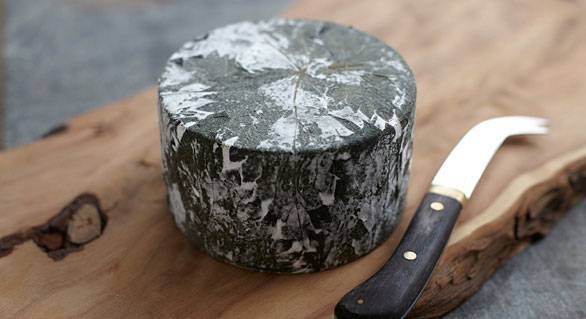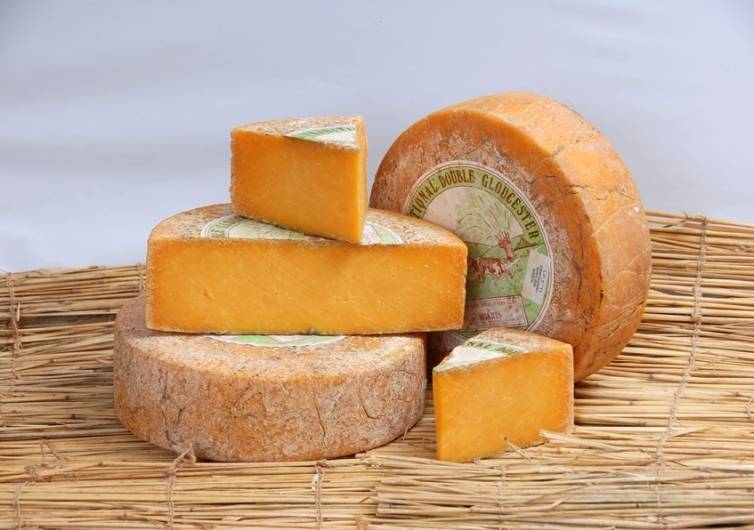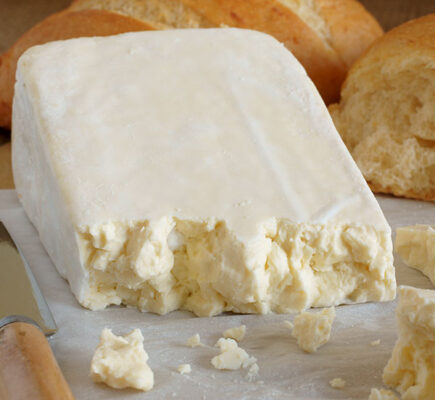From Cheddar to Stilton, there’s a cheese for every occasion—and fortunately for us, an enormous variety of it is produced in Britain. This list covers the traditional cheeses and some of the modern classics.
Caboc
A soft, buttery, full-cream cheese, Caboc is seldom seen south of Scotland. The cheese is rolled in toasted oatmeal and is best when eaten spread on biscuits without butter.
It is also perfect on cheeseboards or mixed with Drambuie or malt whisky for dessert. It pairs well with light red wines.
Caerphilly
This crumbly white cheese from Wales has a mild, slightly tangy flavour. It is made from unpasteurised cow’s milk and matured anywhere from a week to a fortnight.
It pairs well with white wines and is perfect for grating or melting over dishes like pasta or pizza. Vegetarian varieties are available.
Cheddar
All varieties of Cheddar are labelled with their country of origin and a guide to strength, from mild to extra mature.
It is worth looking out for local Cheddars, produced on a smaller scale and usually rinded cheeses. They tend to be firmer and less ‘soapy’ than some of the run-of-the-mill Cheddars.
English Cheddar has a strong yellow colour and a close, creamy texture. It’s full, nutty flavour, which varies in strength, makes it a good all-purpose cheese. English Cheddar is at its best at six months old.
Scottish Cheddar has a firmer texture than English and often a stronger flavour.
Cheshire
The oldest known British cheese, Cheshire is crumbly with a mild, mellow and slightly salty taste. It’s available in red and white colours.
Blue Cheshire is produced when an edible blue mould is added to the freshly made curd—it is deeply veined with a strong flavour and slightly creamy texture.
Cornish Yarg

A mild, pale hard cheese with a slightly tangy taste. The cheese is wrapped in nettles producing a dark grey-black rind.
The Cornish dairy farmers who discovered this recipe named it Yarg—a reversal of the letters of the name of the former owner—in a bid for a more Cornish-sounding name.
Crowdie
A soft cheese from the Scottish Highlands. Crowdie is made from skimmed milk and enriched with cream, carrying a texture similar to cottage cheese, but finer.
It is a low-fat, sour-tasting cheese, and occasionally flavoured with herbs. Crowdie is traditionally eaten before a ceilidh, often with oatcakes, to alleviate the effects of whisky.
Derby
This is a honey-coloured and close-textured cheese with a buttery flavor. Derby cheese is allowed to mature for up to six months and during this time, its mild, distinctive flavor develops to the full.
The most popular variety is Sage Derby, which is flavored and colored with the herb.
Double Gloucester

Vegetable coloring gives this firm, smooth, mature cheese a rich golden hue. Made from the milk of Gloucester cattle and matured for between three and six months, it has a clean buttery flavor.
Double Gloucester is often blended with other ingredients, or even layered with Stilton into Huntsman cheese.
Dunlop
A moist Scottish cheese, rather like English Cheddar but with a softer texture and usually milder. It has the colour of pale butter. Dunlop is good for grilling and pairs well with whisky.
It is often made using vegetarian rennet, making it suitable for vegetarians. A smoked variety is also available.
Huntsman
A layered cheese, with Double Gloucester sandwiching a layer or three of Stilton. The dual composition makes it a difficult to cook with, but it is perfect for cheeseboards.
It works well in a ploughman’s lunch, matched with strong ale. Huntsman cheese is also known as Stilchester.
For more click thebritaintimes.co.uk
